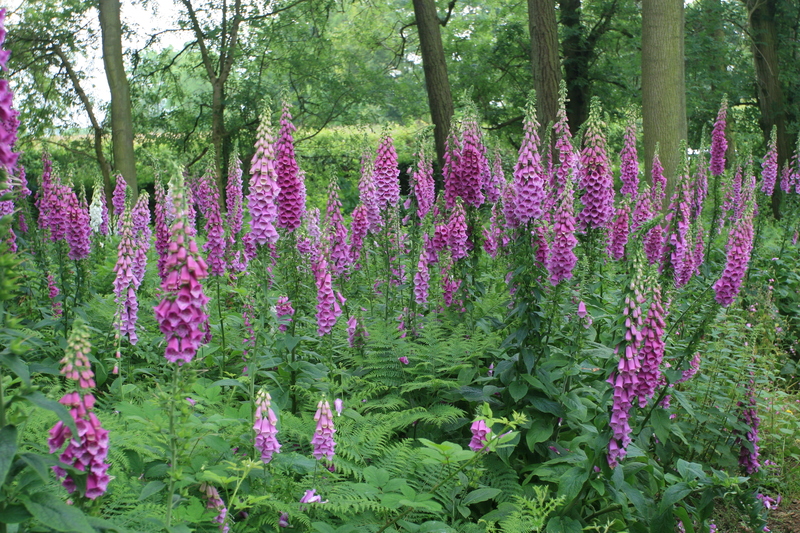Harnessing Vertical Gardening for Urban Sustainability
Posted on 02/06/2025
Harnessing Vertical Gardening for Urban Sustainability
Urbanization is an accelerating global trend, reshaping the landscape of cities and intensifying the need for innovative solutions to achieve sustainability. Vertical gardening has emerged as a creative and practical answer to the challenges of limited space, food production, pollution reduction, and overall urban sustainability. This article explores how harnessing vertical gardening can significantly contribute to the future of sustainable urban living.
Understanding Vertical Gardening: A Green Revolution in Cities
What Is Vertical Gardening?
Vertical gardening is the practice of growing plants on vertical surfaces, such as walls, trellises, pillars, and specially designed structures, rather than conventional horizontal gardening beds.
- Living walls or green walls are the most common manifestations of vertical gardens.
- These setups can vary from simple DIY wall planters on balconies to sophisticated hydroponic systems covering entire building facades.
- *Vertical farming* is a subset of vertical gardening that involves large-scale, high-tech production of crops indoors, often using advanced technologies like hydroponics and LED lighting.
Key Benefits of Vertical Gardening for Urban Environments
- Maximizes limited space in densely populated cities
- Improves air quality by filtering pollutants and releasing oxygen
- Reduces the urban heat island effect
- Enhances biodiversity
- Provides fresh, local produce, contributing to urban food security
- Improves building insulation and energy efficiency
- Offers psychological and aesthetic benefits to urban dwellers

The Role of Vertical Gardens in Urban Sustainability
Vertical gardening aligns directly with key pillars of sustainable development in cities. Here is how integrating vertical greenery can lead to greener, healthier, and more resilient urban spaces:
1. Optimizing Space Utilization
Cities constantly grapple with the scarcity of open land for parks, farms, and recreational green spaces. Vertical gardening in city environments leverages vertical real estate--walls, fences, rooftops, and balconies--making efficient use of every available inch. By going vertical, urban planners and residents can:
- Transform otherwise unused surfaces into productive landscapes
- Boost the amount of vegetation without expanding city footprints
- Create green corridors that improve connectivity for urban wildlife
2. Enhancing Urban Food Security with Vertical Farming
With supply chains increasingly vulnerable and food miles remaining a critical environmental concern, urban vertical farms and gardens bring food production closer to consumers. This contributes to:
- Year-round production: Controlled environments allow for continuous harvesting, regardless of external climatic variations.
- Reduced food miles: Growing food locally decreases transportation emissions and food spoilage.
- Community empowerment: Rooftop, balcony, and communal vertical gardens can foster a sense of ownership and cooperation among residents.
*Vertical farming* technologies, such as hydroponics, aeroponics, and aquaponics, optimize water and nutrient use, dramatically reducing resource consumption compared to conventional agriculture. Some buildings even direct graywater into vertical gardens, contributing to onsite water recycling.
3. Improving Urban Air Quality
Dense urban areas often struggle with air pollution from traffic, industry, and heating systems. Vertical gardens in cities serve as living filters, removing airborne pollutants and trapping dust, volatile organic compounds (VOCs), and even some heavy metals. Plants also capture carbon dioxide and release oxygen, actively purifying the air and creating healthier microclimates for city inhabitants.
4. Reducing Urban Heat and Managing Climate
Vertical gardens cool buildings and public spaces by providing shade and supporting natural evapotranspiration. This cooling effect helps to:
- Lower overall urban temperatures and alleviate heat island effects
- Reduce reliance on air conditioning, saving energy and lowering greenhouse gas emissions
- Protect building facades from extreme weather, extending their lifespan
5. Promoting Biodiversity
Urbanization often leads to habitat loss and fragmentation, threatening local flora and fauna. Vertical gardening for sustainability restores pockets of biodiversity by:
- Providing habitats for insects, birds, and pollinators
- Offering food sources, nesting sites, and shelter for urban wildlife
- Contributing to broader ecological networks within cities
6. Social and Psychological Benefits
Beyond ecological and economic gains, vertical gardens enhance urban aesthetics, reduce noise pollution, and provide therapeutic benefits. Exposure to greenery is known to decrease stress, boost mood, and improve mental health--critical attributes for bustling urban environments.
Practical Applications of Vertical Gardening in Urban Settings
Residential Vertical Gardens
From high-rise balconies to apartment interiors, residents are discovering how vertical gardening systems can transform small living spaces into lush retreats. Easy-to-install panel kits, modular stackable planters, and pocket gardens make it accessible for anyone to start growing:
- Herbs, salads, and vegetables--perfect for kitchen use
- Air-purifying plants to combat indoor pollution
- Flowering vines to beautify balconies and patios
Commercial and Public Space Installations
Businesses and municipalities are adopting vertical gardens to revamp office interiors, shopping malls, community centers, and even school yards. These initiatives can:
- Improve employee well-being and productivity
- Demonstrate a commitment to sustainability
- Attract customers and beautify neighborhoods
Some eye-catching examples include living walls in hotel lobbies, vertical gardens adorning parking garages, and plant-covered pedestrian bridges offering respite from cement and steel.
Large-Scale Urban Vertical Farming
Urban vertical farms, integrated into skyscrapers, warehouses, and shipping containers, are redefining urban agriculture. These advanced systems use stacked shelves, controlled lighting, and climate automation to grow crops on a commercial scale.
Some key features include:
- Water-efficient hydroponic or aeroponic technologies
- Automated lighting, nutrient, and temperature controls
- Year-round, soil-less cultivation
Vertical farming startups are partnering with supermarkets, restaurants, and schools to supply ultra-fresh produce with a minimal environmental footprint.
Essential Tips for Starting a Vertical Garden in the City
1. Assess Your Space
- Identify surfaces with adequate sunlight--balcony railings, walls, fences, or even windowsills.
- Ensure structures can support the weight of soil, water, and plants.
2. Choose the Right System
- Pocket panels: Best for herbs, lettuces, and trailing plants on small walls or fences.
- Stacked planters: Perfect for balconies or patios with limited floor space.
- Trellises: Ideal for climbing vegetables like peas, beans, and cucumbers.
- Hydroponic towers: High-yield, space-saving systems for those who want to maximize harvests.
3. Select City-Suitable Plants
- Vegetables: Lettuce, spinach, kale, tomatoes, peppers, cucumbers
- Herbs: Basil, mint, chives, parsley, cilantro
- Flowers: Petunias, nasturtiums, marigolds, begonias
- Air-purifying species: Ferns, spider plants, pothos, peace lilies
4. Ensure Watering and Drainage
- Install drip irrigation or self-watering reservoirs to minimize maintenance.
- Check regularly for leaks or clogged drainage to prevent root rot and structural damage.
5. Maintain and Monitor
- Prune plants to encourage healthy growth and prevent blockage of light and airflow.
- Fertilize appropriately--vertical gardens may require extra nutrients due to limited soil volume.
- Keep an eye out for pests and diseases, which can spread quickly in dense plantings.
Overcoming Challenges in Urban Vertical Gardening
While the benefits are substantial, vertical gardening for urban sustainability does come with its own set of challenges:
- Initial costs: Installing structural supports, irrigation, and lighting systems can be pricey, though costs decrease with scale and innovation.
- Maintenance: Vertical gardens require regular care to avoid plant stress, disease, or equipment malfunction.
- Microclimate management: Urban gardens may face intense shade, wind, or heat. Choosing the right location and species is crucial to success.
- Water management: Efficient irrigation and drainage are critical to avoid water waste or structural issues.
Despite these hurdles, advances in technology, supportive policy frameworks, and growing public interest continue to drive vertical gardening adoption worldwide.
Case Studies: Innovative Vertical Gardening Projects Around the World
1. Singapore's "City in a Garden" Vision
Singapore has embraced vertical green infrastructure on an impressive scale. The iconic Supertree Grove at Gardens by the Bay is a stunning example--18 towering vertical gardens housing over 162,900 plants. Skyscrapers like the Oasia Hotel Downtown are wrapped in living walls that harvest rainwater, support biodiversity, and cool the building naturally.
2. The Bosco Verticale of Milan
Standing tall in Milan, Italy, the Bosco Verticale (Vertical Forest) consists of two residential towers featuring more than 900 trees and thousands of shrubs and perennials. This pioneering project illustrates how *vertical gardening* can integrate rich biodiversity with modern architecture, setting new benchmarks for sustainable urban housing.
3. Urban Farming in New York City
Urban farming startups like Farm.One and Bowery Farming have established cutting-edge vertical farms inside city warehouses. These high-tech hubs deliver hyper-local greens and herbs to restaurants and supermarkets, using 95% less water and zero pesticides compared to traditional agriculture.

Policy and Future Directions for Vertical Gardening in Sustainable Cities
To fully realize the potential of vertical gardening for sustainable urban environments, cities must align policy, incentives, and education. Suggested strategies include:
- Incorporating vertical gardens into urban development codes and green building standards
- Providing tax credits, grants, or subsidies for green walls and vertical farms
- Launching public awareness campaigns and educational programs around urban vertical gardening
- Encouraging public-private partnerships to install vertical gardens in schools, hospitals, and public housing
Additionally, more research is needed into plant selection, engineering methods, and integrated technology to optimize the ecological and social benefits of vertical gardens in diverse urban contexts.
The Future of Urban Sustainability: Going Vertical
As cities strive to meet the demands of a growing population while reducing their environmental impact, vertical gardening offers a transformative pathway toward urban sustainability. From lush residential balconies to futuristic skyscraper farms, these living installations are more than just decorative--they are vital components of the urban ecosystem.
By integrating vertical gardens into the fabric of our cities, we can increase green space, produce local food, clean the air, and enhance the quality of life for all city dwellers. The future is green, and with vertical gardening, it's going up!
- Discover more about urban vertical gardening and start your city greening journey today!
- Visit local botanical gardens or community farms for inspiration and practical workshops.
- Explore vertical gardening kits and resources to transform your own urban space.
*Join the urban vertical gardening movement and be a part of shaping sustainable, resilient, and beautiful cities for generations to come.*

